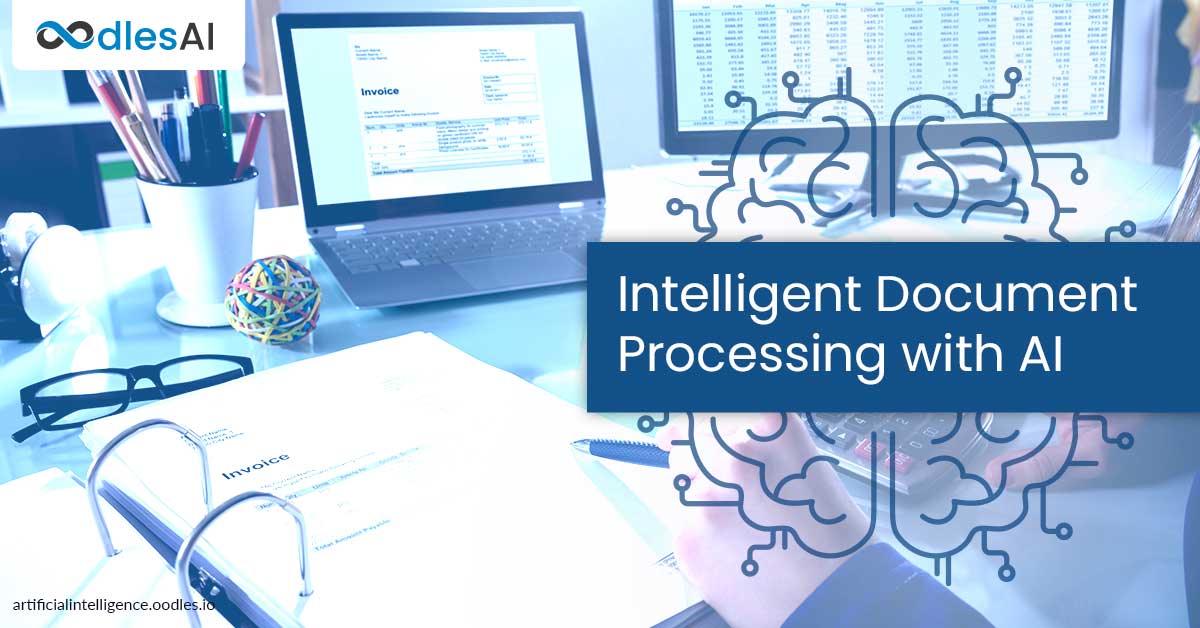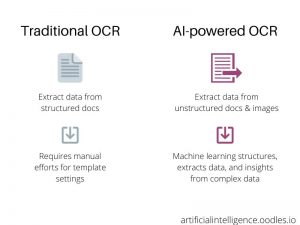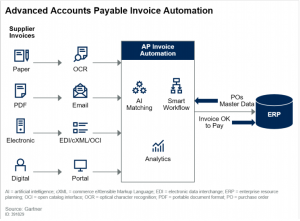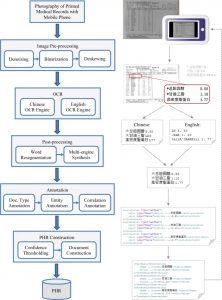How AI Streamlines Intelligent Document Processing for Businesses
Sanam Malhotra | 30th August 2020

The market size of Intelligent Document Processing (IDP) is poised to grow by 70-80% in the next two years. IDP is a nexus of automation technologies, Optical Character Recognition (OCR), and Artificial Intelligence (AI) automating data processing in documents. From physical to unstructured docs, IDP is all set to replace laborious data entry with efficient data capture, extraction, and transfer.
In this edition, we, at Oodles, as an AI Development Company, provide a quick insight into how AI powers Intelligent Document Processing and its applications.
How AI Fuels Intelligent Document Processing
Traditional OCR systems required manual efforts to capture and extract relevant information from unstructured documents. Whereas AI-powered tools that automatically identify, capture, and extract valuable data from PDFs, emails, scanned files, and other unstructured documents. A step ahead, IDP employs Robotic Process Automation (RPA) tools to move this captured data into existing applications for seamless workflows.

Intelligent Document Processing is a combination of OCR, RPA, and AI technologies such as computer vision, deep learning, and Natural Language Processing (NLP). While RPA automates rule-based data capturing, AI improves model performance by training it to understand and capture relevant information accurately.
The major enterprise advantages of deploying Intelligent Document Processing are as below-
a) Accurate identification of different layouts and fields such as contact details, amount, vendor names, etc.
b) Quick data mobility from documents to existing applications, reducing manual time and cost
c) Better employee productivity as 70% of data entry tasks can be automated through IDP
d) Multiple output formats including PDF, XML, HTML, TSV, JSON, and more.
e) Efficient detection of unclear text, fixing blurred, low-contrast, and uneven surfaces automatically, and
f) Easy integration into existing IT environments.
Enterprise Applications of AI-powered Intelligent Document Processing
Backed by AI, IDP solutions can significantly improve business efficiency by optimizing various applications involving data capture and extraction. IDP enables employees to streamline the 1-10-100 rule, thereby eliminating $1 cost of error prevention, $10 for correction, and $100 for no action.
Below are some critical business applications of Intelligent Document Processing across industries-
1) eKYC
In light of global lockdown, banks and financial institutions are challenged to complete and comply with KYC norms. Adapting to the new normal of limited customer interactions, banks are now turning to video-based KYC processes powered by advanced technologies.
Intelligent Document Processing enables banks to capture and extract customer information from identity documents while creating editable and searchable archives.
IDP’s underlying machine learning algorithms enable the software to identify different fonts, formats, and languages of information effectively. By preventing erroneous entries of customer data, IDP can save up to 60% of manual labor and cost for businesses.
The Oodles AI team built a machine learning-based OCR system that extracts customer data from Aadhar card, passports, DL, and other identity docs.

Having achieved over 95% accuracy, the model exhibits optimum results in recording and transferring the captured data to other applications.
Also read | eKYC with Artificial Intelligence: A Roadmap for Businesses Amid Crisis
2) Automated Purchase Order and Invoice Processing
One of the most herculean tasks of accounting functions is the processing of invoices and purchase orders. It is estimated that on average, a typical accounts payable executive can process only 20 invoices a day. With AI capabilities, organizations can increase their efficiency by as much as 60%.
Below is how Gartner visualizes data transition from documents, digital files, and electronic media through automation systems to internal ERP systems.

In addition to invoice and purchase order automation, AI-powered OCR scanning services couple with RPA optimizes data mobility across supply chains.
Read more | Automating Purchase Order OCR with Artificial Intelligence
3) Digitized Healthcare Records
As doctors struggle to make sense of enormous medical data pouring in during the pandemic, AI offers resilient solutions. With techniques like image binarization, character enhancing, page segmentation, and page layout analysis, IDP improves data extraction from medical docs. IDP, therefore, empowers doctors to accelerate diagnosis with accurate data recorded digitally and generate in-depth insights about patients and diseases.
Also, deep neural networks enable IDP systems to distinguish between words, digits, punctuation, and strokes clearly for accurate character classification.

A recent NCBI research paper elaborates on the process of intelligent document processing to produce PHR or Personal Health Records.
Also read | Building AI-OCR for Digitizing Healthcare Records and Lab Reports
Oodles AI: Your Automation Partner for Intelligent Document Processing
As the world flights a deadly virus, technological advancements are desperately required to eliminate bottlenecks and speed-up results.
We, at Oodles, are dedicated to harnessing the power of AI and automation technologies for simplifying complex business processes. Our AI team has experiential knowledge in deploying machine learning, computer vision, NLP, and other technologies to automate data extraction systems.
Our capabilities under Intelligent Document Processing expand to-
a) Automated identification of unstructured and semi-structured documents
b) Support for over 20 languages along with handwritten documents
c) Classification of data using OpenCV to simplify recording
d) Seamless transition of data to other applications like ERP, CRM, etc.
e) Smooth integration of IDP into the internal IT ecosystem.
Connect with our AI team to explore more about how Intelligent Document Processing can lead your business to save huge costs and generate significant value.



